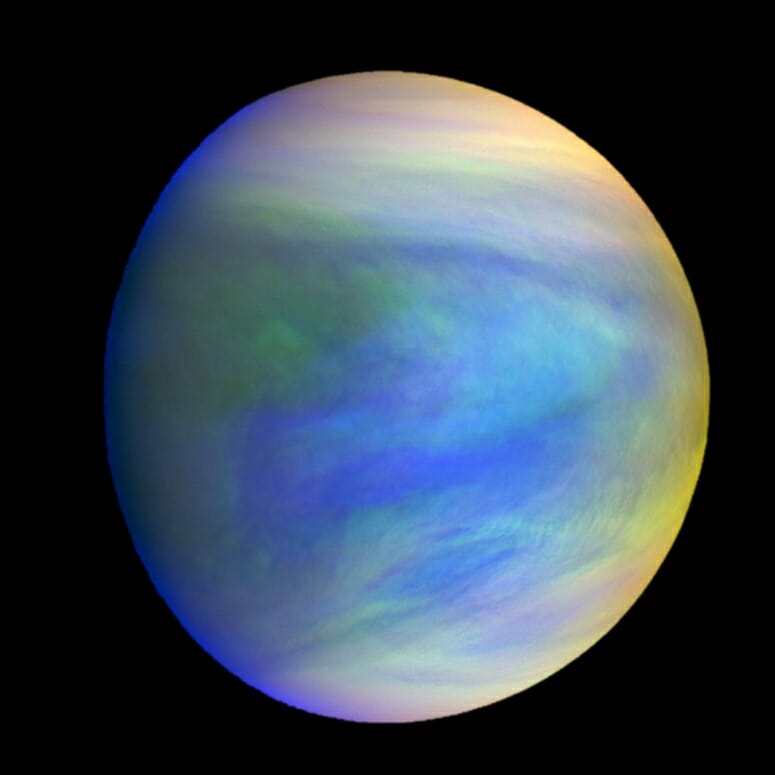Wisconsin: Mysterious Cloud 'Absorbers' Seen to Drive Venusian Albedo, Climate
Posted: Tue Aug 27, 2019 9:42 pm
Mysterious Cloud 'Absorbers' Seen to Drive Venusian Albedo, Climate
University of Wisconsin, Madison | 2019 Aug 26
Long-term Variations of Venus's 365 nm Albedo Observed by Venus Express,
Akatsuki, MESSENGER, and the Hubble Space Telescope ~ Yeon Joo Lee et al
University of Wisconsin, Madison | 2019 Aug 26
As planets in our solar system go, Venus is one for the textbooks.
Although about the same size as Earth, Venus is a terrestrial planet with a similar composition to our planet, and has about the same proximity to the sun. But the parallels pretty much end there. Venus is much hotter – in the neighborhood of 860 degrees Fahrenheit (460 degrees Celsius) at the surface – due to a runaway greenhouse effect caused by a thick, carbon dioxide rich atmosphere and a blanket of clouds composed mostly of droplets of sulfuric acid. The planet rotates in the opposite direction of Earth (the sun rises in the west), and its surface has never been seen by the human eye as it is completely obscured by its banks of opaque, highly reflective clouds.
But like Earth, the Venusian weather is driven by solar radiation and is deeply influenced by changes in the reflective properties or albedo of the clouds that envelop the planet. And now a better picture of that weather and how it is influenced by changes in the reflectivity of the clouds has emerged, thanks to an international team of researchers using a suite of satellites to assess in ultraviolet light the long-term variations in Venus’ albedo. ...
What is curious about Venus’ clouds – other than that they are unlike anything on Earth – is that in those clouds are mysterious dark patches, dubbed “unknown absorbers” by scientists as the tiny particles that make up the patches soak up most of the ultraviolet and some of the visible light from the sun and thus affect the planet’s albedo and energy budget.
The patches were first observed by ground-based telescopes more than a century ago. They ebb and flow over time, changing their distributions and contrasts. ...
Long-term Variations of Venus's 365 nm Albedo Observed by Venus Express,
Akatsuki, MESSENGER, and the Hubble Space Telescope ~ Yeon Joo Lee et al
- Astronomical Journal 158(3):126 (Sep 2019) DOI: 10.3847/1538-3881/ab3120
- arXiv.org > astro-ph > arXiv:1907.09683 > 23 Jul 2019
